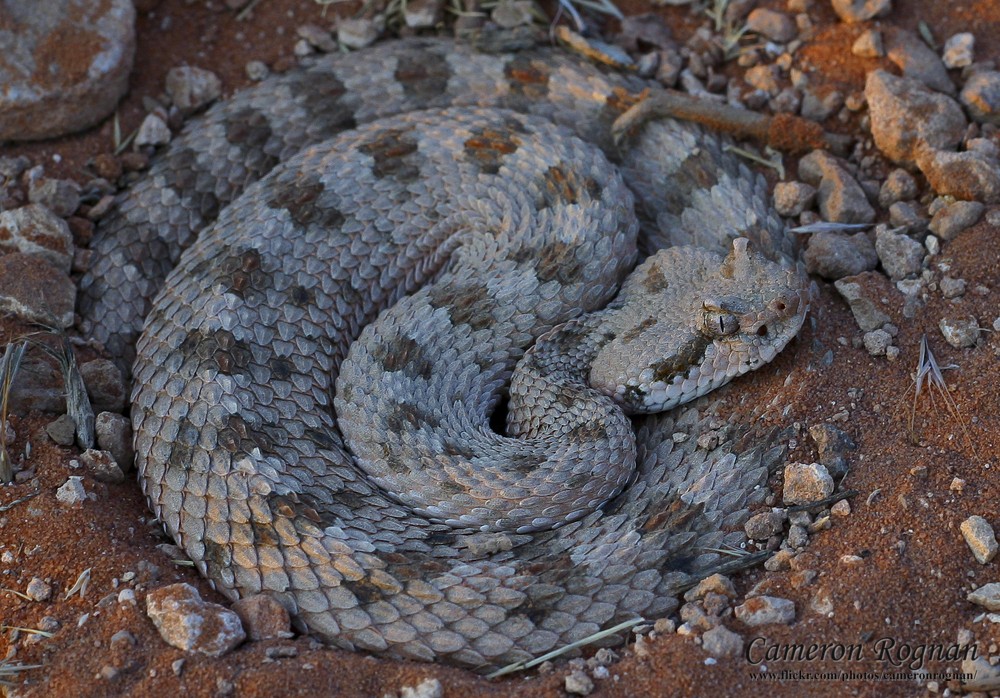Mojave Desert Sidewinder
(Crotalus cerastes)
Sidewinder rattlesnakes can grow up to nearly 3 feet in length, but most are around 1-2 feet. The snakes in our area are typically more pinkish than in the rest of the Mojave. They have a dark stripe behind their eye and brown dorsal blotches.
Sidewinders are named after their unique mode of locomotion. They pick up their entire body and move in a sideways direction to effectively travel in the sandy habitat they live in. During the heat of the day, or while hibernating in the winter, they seek refuge in mammal burrows, under large rocks, or in rocky shelters. They eat primarily lizards, but will also eat small rodents as adults. They do not always rattle before striking or announcing their presence, instead, many rely on their camouflage to remain hidden .
Rattlesnakes are pit vipers, meaning they have heat sensing organs near their nostrils to detect the temperature of objects in their surroundings, such as their warm-bodied prey. Although sidewinders are venomous, like most rattlesnakes, these creatures will avoid confrontation whenever possible and retreat before striking. They are most dangerous when they are harassed or when someone try’s to handle or move them. If you find a sidewinder in your yard, garage, or anywhere else you need it removed, please call the Utah Division of Wildlife Resource or the Red Cliffs Desert Reserve to have to removed and relocated.
